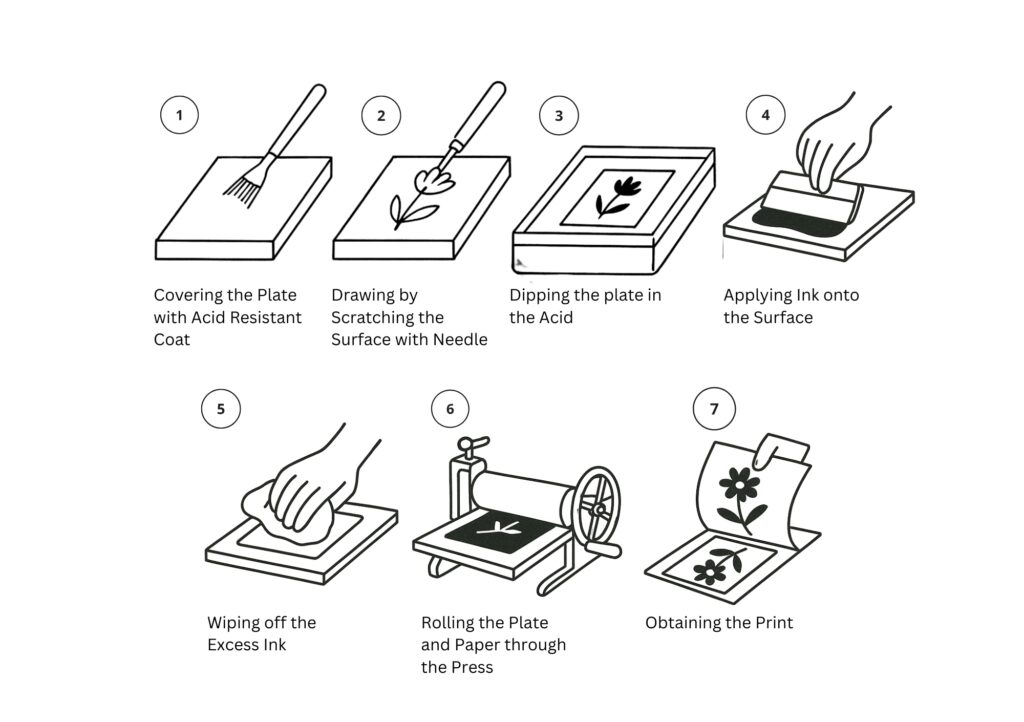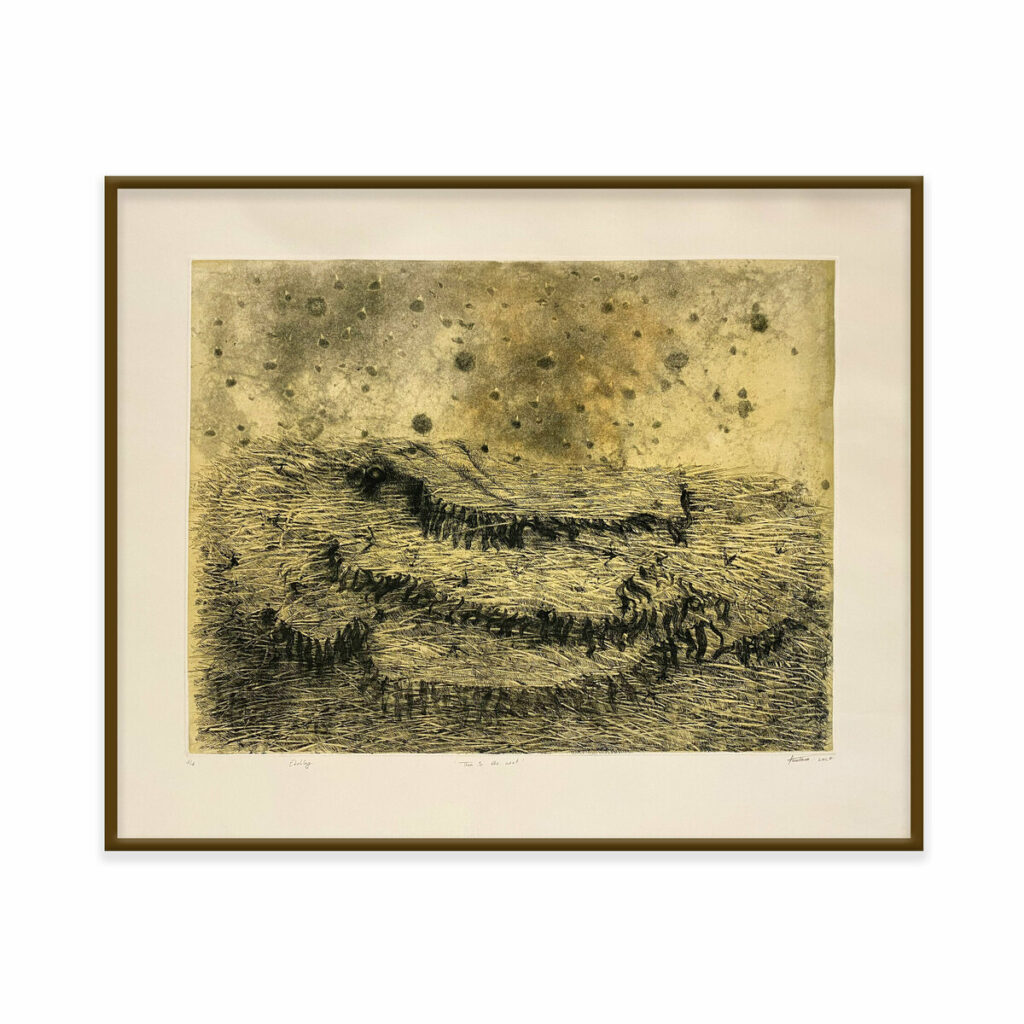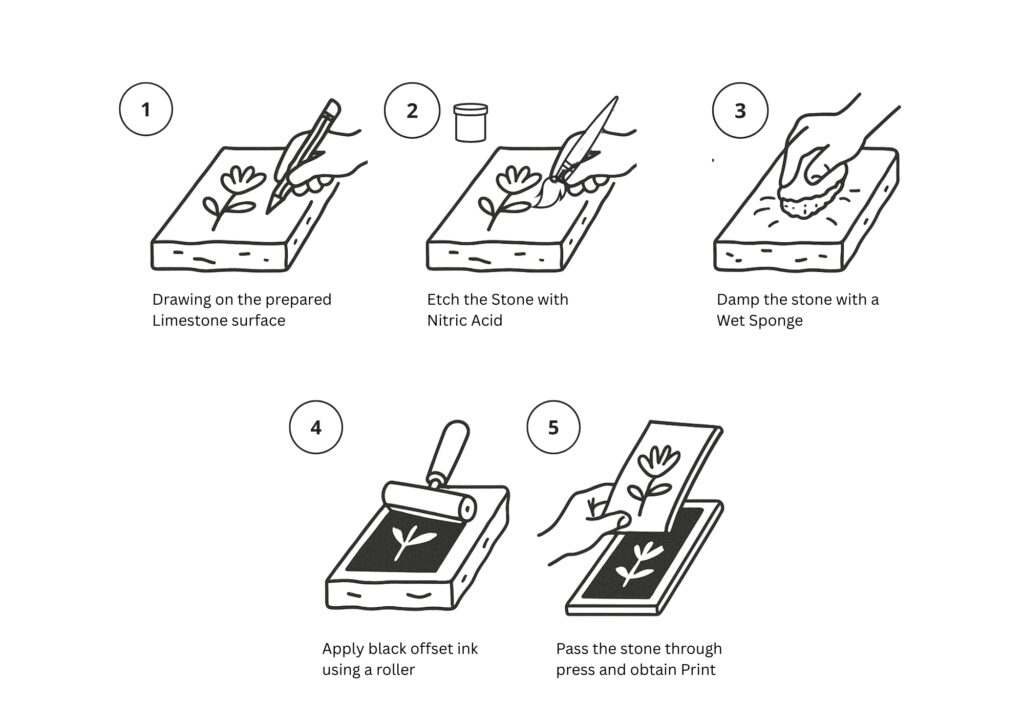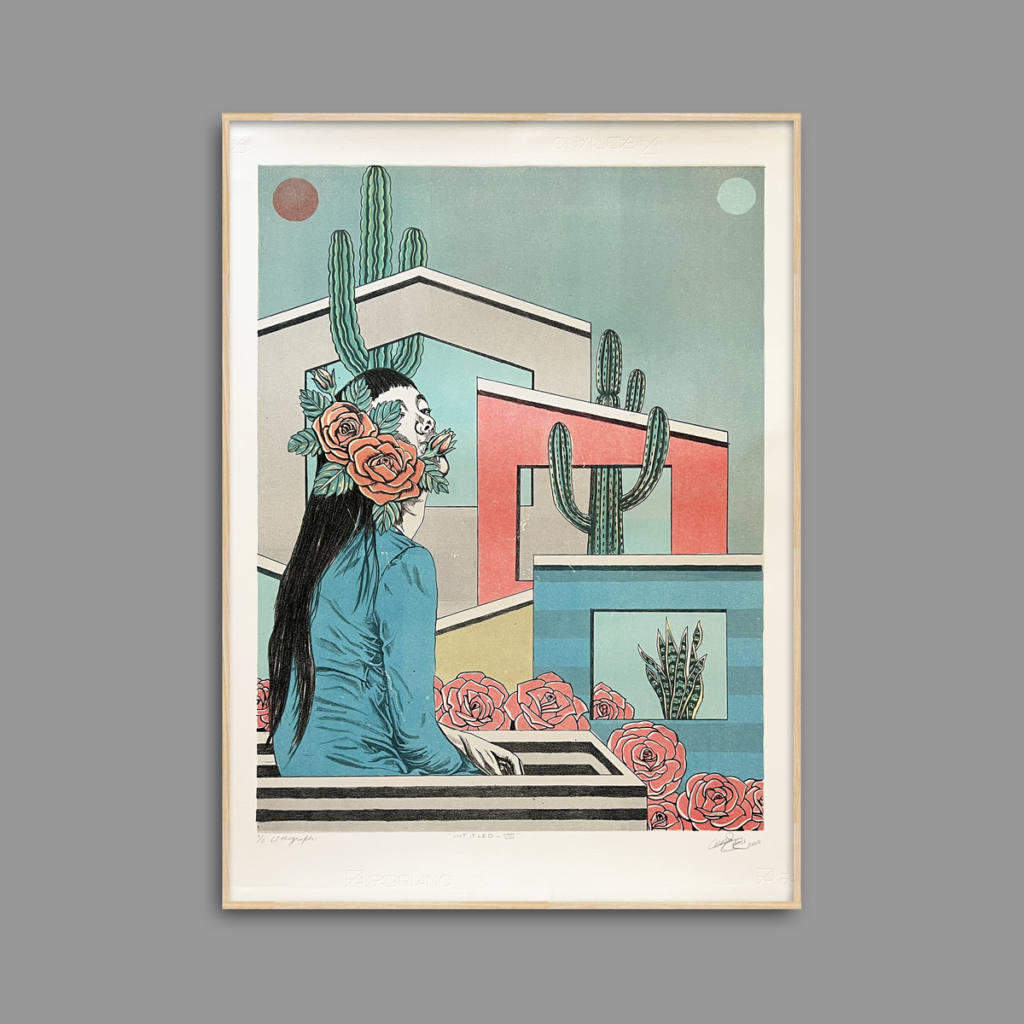Written by Prachi Sahasrabudhe
Have you ever seen an artwork that looks exactly the same as another one and wondered how it was made? That’s where printmaking comes in — a fascinating art form that is a blend of technique, tradition, and creativity.
At its core, a print refers simply to an image made through a process that allows it to be duplicated. As historian Antony Griffiths explains, it’s a visual image created by a method that makes reproduction possible (Griffiths, 2016). Imagine carving a design onto a block, applying ink, and pressing it onto paper — and there it is — you’ve got a print! This is the traditional idea behind printmaking — creating multiple identical artworks from a single surface.

The Evolution of Printmaking as a tool of art creation
But printmaking today goes beyond repeating the same image. With contemporary techniques and digital tools, the definition has expanded. Printmaking artists now create prints in both 2D & 3D formats, using a mix of old-school and modern processes. Some prints are made in multiples, while others are unique, one-of-a-kind creations. Hence, printmaking now includes a range of methods and materials that make it difficult to define with just one sentence. (Abadin et al., 2013).
What’s interesting is that printmaking isn’t just a technique anymore — it’s also a visual language. It’s a medium for storytelling, for experimenting, and for pushing boundaries. Whether artists are using ink, digital prints, or chemical processes, they’re all speaking through their tools.
.
.
The Four Main Printmaking Techniques
If you’re new to the world of printmaking, it helps to know that the main methods of printmaking fall into four categories:
- Relief
Think of this like a stamp. The artist carves away parts of a surface (usually wood or linoleum), leaving the design raised. Ink is rolled onto the raised area, and then the image is pressed onto paper. Woodcut and linocut are popular forms of this ancient technique that dates all the way back to 9th-century China!


.
.
2. Intaglio
This one’s a bit trickier. Instead of printing from a raised surface, artists work with etched or engraved metal plates. Ink fills the grooves or lines, and then paper is pressed firmly onto the plate to pull out the image. Techniques like etching, engraving, and drypoint fall under this category. Artists can also create soft tones using chemical methods like aquatint or sugar lift.


.
.
3. Planographic
Here, the design sits flat on the surface — nothing raised or carved. Lithography is the most well-known technique in this group. It works on the principle that oil repels water. Artists draw with greasy materials on a stone, add water, and then apply ink. The ink sticks only to the drawing Made with greasy materials like oil pastels,ink etc. , and the image is transferred onto paper using a printing press.


.
.
4. Stencil
This is one of the easiest to understand — and you’ve probably done it yourself! In stencil printing, ink is pushed through a cut-out shape onto the surface below. Screen Printing, also known as serigraphy, is the most common form of this method — widely used in making t-shirts, posters, and even fine art prints.


.
.
Old Meets New: The Modern Printmaker’s Toolbox
Artists today aren’t limited to just one method. They mix and match techniques to create unique effects. Some even use digital tools or photographic processes alongside traditional methods. While computers and machines make it easier to replicate images with precision, many artists still prefer the hands-on approach. There’s something magical about the human touch — it brings authenticity, imperfection, and heart to each piece.
Printmaking : A Living, Breathing Art Form
Printmaking is no longer just about creating copies — it’s about creative exploration. Whether it’s an ancient woodcut or a digital photo print, every technique opens a plethora of artistic expressions. And as technology continues to evolve, so does the definition of what a print can be.
So next time you see a print, take a closer look — it might just tell a much richer story than you expected.
.
.

Prachi Sahasrabudhe is a visual artist working primarily with printmaking and drawing, with occasional explorations in digital illustration. Her interests lie in fine art, analogue print processes, visual communication, and contemporary Indian art practices.
She holds a BFA from Sir J.J. School of Art, Mumbai (2016), and an MFA from Kala Bhavana, Visva Bharati University, Santiniketan (2018). In addition to her art practice, she has worked as an educator and curriculum designer across various academic levels, and is skilled in art techniques, research, writing, and planning.
Prachi regularly writes for art publications, including Art Affairs Newspaper, where she edits a printmaking journal and contributes to the blog Print Scoop. Her writing also features in California Society of Printmakers (2021) and Abir Pothi.
She runs her own studio, Tints & Prints, offering printmaking workshops and residencies. Prachi continues to actively exhibit, teach, and engage with the contemporary art scene in India.
.
.
References
- Abidin,M.Z., Andian,W.S., Daud,W.M., Razif,M.,& Rathi,M. (2013). Printmaking Understanding the terminology. Elsevier Publication, presented at 6th International conference of University learning & teaching .pp. 405-410.
- Griffiths, A. (2016). Prints & Printmaking- an introduction to history & techniques.(Rev.ed). Thames & Hudson. ISBN – 978 0 7141 2608 1. (First published 1980).
- Sengupta, P. (2012). The Printed Picture: Four Centuries of Indian Printmaking.Vol. I, DAG.
- Sengupta, P. (2012). The Printed Picture: Four Centuries of Indian Printmaking.Vol. II, DAG.
